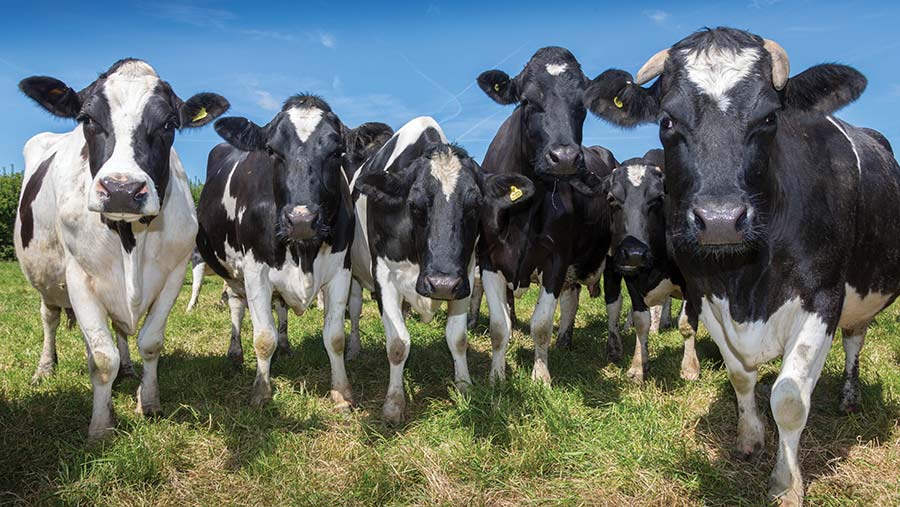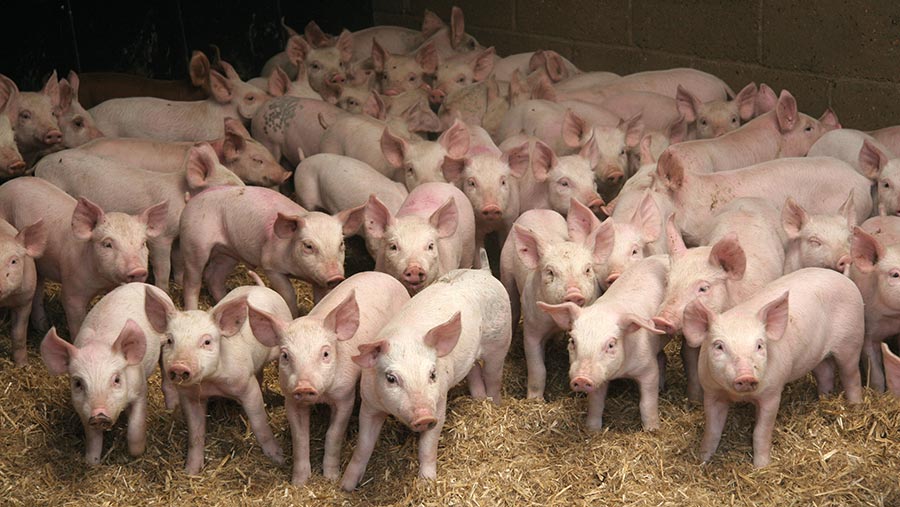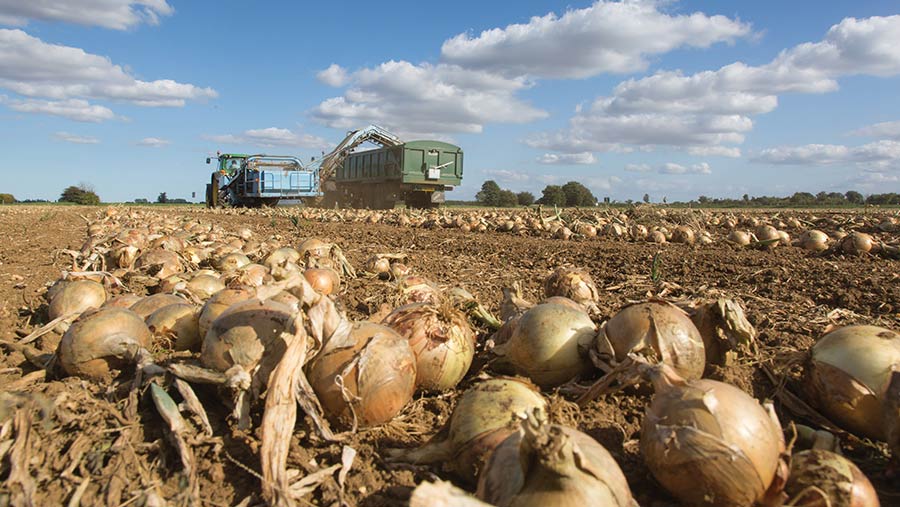Analysis: Falling farm borrowing figure masks sector stresses
 © Tim Scrivener
© Tim Scrivener Lending to agriculture at the end of April stood at £18.009bn, a fall of £857m on the year.
However, this masks the position of many individual businesses, especially in the pig, poultry, field vegetable and protected cropping sectors, where borrowings have risen over the past year.
The prospect of a further base rate rise from 4.5% to at least 4.75% this week will add cost across the board.
The Bank of England’s monetary policy committee was due to meet on Thursday 22 June.
See also: Cashflow management advice
Anecdotally, a greater number of farmers have retired recently than in previous years, which could account for some of the reduction.
A good proportion of the farms advertised in Farmers Weekly this year have been brought to the market as a result of retirement.
High land prices and the lack of certainty over future food, farming and environmental policies have prompted some of these decisions, while difficulty in recruiting labour has been the decider for others.
Development land sales are a factor, but will account for a relatively small portion of the reduction in borrowing, say commentators.
Pigs
Pig producers have had two years of losses, resulting in the national sow herd falling by about 25% in the two years to January 2023.
“Although the standard pig price continues to reach new highs due to the sustained tightening in supply, and cereals and other input costs have eased somewhat, producers still have a huge financial black hole to fill,” says National Pig Association chief executive Lizzie Wilson.
“Although the current mood is definitely more optimistic and the herd is expected to recover, albeit slowly, there are still many cautious producers concerned about the uncertainty of the next few months and whether such high pig prices will be maintained.”

© Tim Scrivener
Rising cull sow prices may tempt more producers to leave the sector in the next few months, to be able to recoup their losses and potentially a small margin, says Lizzie, with higher interest rates deterring some from investing in their businesses.
Pig consultant Paul Wright of Checkmate Pig Management says it will take some producers a very long time to fill that black hole.
“Like everyone else, pig producers are looking to repair the damage and then there will still be some hard decisions to be made,” he says.
“Those who are thinking of going out would want to fill that hole as far as they could, and go out when stock is at its highest.”
Now that prices are at a much better level than a year ago, it will be tempting for these producers to carry on for another six months, he says, but with the volatility that has been seen in markets, this carries a risk too.
Dairy
Borrowing in the dairy sector is relatively stable overall, at an average of £2,700-£3,000 a cow, says John Allen, director at Kite Consulting.
“There has been a lot of investment and we have many clients where more than half of their debt is at fixed rates of 2.5-3%, though some of these will be coming to an end now,” he says.
As in all sectors, rising interest rates are challenging those with high debt levels and widening the financial performance gap.
“Those with high debt levels will be increasingly exposed and we will see more being put into special measures by lenders,” says John.
“Budgets should be stress-tested at an interest rate appropriate for the business – for some that will be 7%, but for others it will be 10% and they will find it very challenging.
“We’ve had years where finance costs were so low that they hardly featured in budgets, but that is changing now and it’s very noticeable.”
He suggests using a cash break-even milk price measure, by comparing milk price with what is required to cover all costs, including capital repayments and drawings, without pushing up the overdraft.
“If your cash break-even milk price is 35p/litre, you’re probably in a good position. If it’s 40p/litre, it will be challenging.”
Interest rates will constrain land values, says John. “Land is not going to go up at these higher rates because very few will be able to cover the cost of financing land purchases.”
Poultry
Continued pressure from retailers to keep prices down is challenging farmgate returns for broiler producers, whose cost of production is up 18% on the year, and rising, says Kerry Maxwell of the British Poultry Council(BPC).
“BPC members are not seeing the returns, despite the price of fresh chicken increasing by around 12.5% over the same period.” .
The pressure on farmgate prices by retailers led to many egg producers destocking, causing retail shortages. Prices are recovering and chick placings are rising, but challenges remain.
Colony egg contract prices have improved and free-market supply is at a 40-50p/dozen premium, says Andersons Midlands partner Mike Houghton.
Tighter lending criteria
Banks are looking harder at affordability and using covenants to require certain performance levels to maintain the facility.
Higher debt service cover levels are being required across the board, says Andersons’ Mike Houghton.
Most banks remain supportive, but the cost of capital is becoming a much more important topic when considering investments or ongoing serviceability, he says.
Many businesses will have to find cash to pay higher tax bills after a good harvest in 2022 and a better dairy year ending in March 2023.
Working capital requirements are rising fast, so that in the beef sector, a producer might have had a £10-£15 a head finance charge on an animal over its life.
“That’s now looking more like £60-£70 a head,” says Mike.
In the arable sector, many growers in the South West need a wheat price of £180/t to be profitable.
That makes a Countryside Stewardship with five years of fixed payments look like a much lower risk, he says.
Fresh produce
British Growers represents organisations in UK horticulture and fresh produce.
“There is ongoing pressure on price because retailers want to be seen to be tackling inflation for their customers,” says CEO Jack Ward.
“This season is going to be no easier than the previous one. A lot of investment has been curtailed because people don’t have the confidence to take the risk.”
The scale of risk in fresh produce means growers are thinking very hard about volumes.

© Tim Scrivener
“The working capital requirements to establish even mechanically harvested crops such as onions and roots is about 10 times that for cereals, and for a relatively fine margin at the end of the day.”
Food inflation
Retail analyst Kantar puts grocery price inflation at 16.5% for the four weeks to 11 June 2023.
This is the lowest level so far this year, but the sixth-highest monthly figure since 2008.
Almost 70% of households are either extremely or very worried about rising food and drink prices.
Of shoppers’ top five financial concerns, it is the only one they are more worried about now than at the start of the year, says Kantar.
The most recent Office of National Statistics annual inflation rate for food and non-alcoholic drinks was 18.4% for the year to May 2023.
This was a marginally lower rate of increase than in the previous month.
The Consumer Prices Index (CPI) for the 12 months to May 2023 was up 8.7%.
On a monthly basis, CPI rose by 0.7% in May this year.
HMRC interest rates rise
A higher bank base rate means the interest rates on late tax payments and repayments by HMRC have risen.
From 31 May 2023, late payments will be charged at an interest rate of 7%, while repayments to taxpayers attract a 3.5% rate.
The rates are set by legislation and linked to the Bank of England base rate, with late payment interest at base rate plus 2.5% and repayment interest at minus 1%, with a lower limit of 0.5%.
The repayment interest rate compensates taxpayers when they overpay or pay early.
The increases in rates apply to all of the main taxes, including income and corporation taxes, national insurance contributions, inheritance and capital gains taxes, as well as stamp duty land tax.
However, the rate charged on underpaid quarterly instalment payments of corporation tax is 5.5% from 22 May 2023, while the interest paid on overpaid quarterly instalment payments and on early payments of corporation tax not due by instalments is 4.25%.
